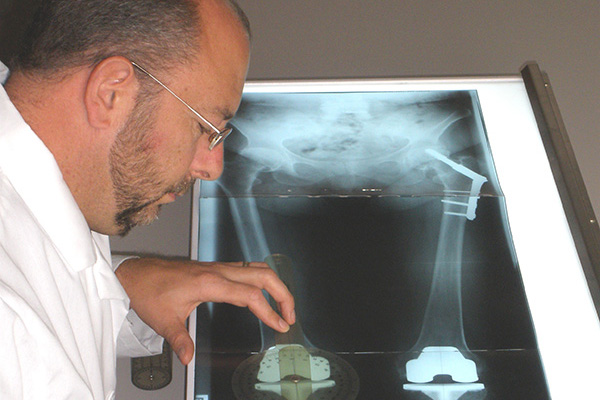Robertson-Hoyt Orthopaedic Fund

An astounding one in three people will suffer from arthritis or joint deterioration in their lifetime, according to Dr. Scott Weiner, director of the orthopaedic surgery department at Summa Health System in Akron. The department sees thousands of patients in a year, but one very special one stands out in Weiner's mind.
In the early 1970s, James G. Robertson, an officer at Firestone Tire and Rubber Company and founder of Firestone Bank, came to Akron City Hospital – now Summa – for treatment from Dr. Walter Hoyt, a renowned orthopaedic surgeon. Robertson and Hoyt developed a close relationship, and when Robertson passed away, his wife, Helen, decided to show her gratitude to Dr. Hoyt by opening a designated fund at Akron Community Foundation to support the hospital's Musculoskeletal Research Laboratory.
"(Helen Robertson) wanted that legacy to live on when she passed away," Weiner said.
In 1974, the Robertson-Hoyt Orthopaedic Research and Education Fund was established with $500,000 with the goal of advancing musculoskeletal research. In the nearly 40 years since its founding, the Robertson-Hoyt Fund has grown to more than $1.7 million, contributing more than $1.4 million to critical orthopaedic research. Thanks to the fund, Summa has discovered new treatments for patients suffering from arthritis, particularly the more than half a million patients who need total knee replacement surgeries each year.
"Without this type of research, we would still be using techniques from 20 years ago," Weiner said. "The fund is helping advance the prosthesis technology we need to stay cutting edge."
With the help of the Robertson-Hoyt Fund, the lab has also been a pioneer in arthroscopic surgery, a minimally invasive procedure used to repair joint damage. The lab developed a pump that inserts fluid into the knee or shoulder joint so a surgeon can more accurately perform the procedure. This research has been a huge help for patients suffering from orthopaedic conditions such as torn knee ligaments and damaged cartilage. "Usually we perform (surgery) on patients whose joints are so bad that they can't even swim or play any kind of sport," Weiner said. But after being treated, patients "can get back to activities like tennis or even racquetball or basketball. We see remarkable results."
Older patients who benefit from the lab's research are often able to spend more time with their grandchildren and maintain their independence, he said. This is especially important for people who plan to stay active in their 70s, 80s and beyond. "As the population lives longer, they have more of these orthopaedic injuries," Weiner said. "With research, we may be able to improve patients' lifestyles in the future."
The Robertson-Hoyt Fund has also been an integral source of support for the lab's residency training program, which introduces orthopaedic students to new methods and research projects. In the future, Weiner said he hopes to put more emphasis on collaborative partnerships with local students and professional researchers. "The fund has been very instrumental in achieving that goal, and we would like to see more combined research in the future," he said.
Ultimately, Weiner said he hopes to use future gifts from the fund to research cures for bone and muscle cancers. This research would not be possible without the generosity of Helen Robertson, whose legacy and philanthropic passions will forever be preserved through her fund at Akron Community Foundation.
